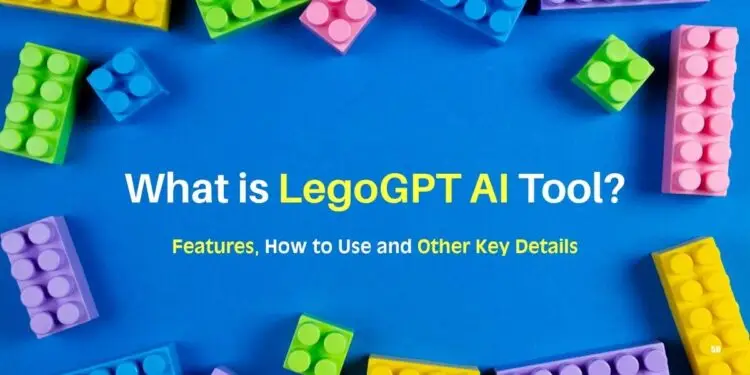If you enjoy LEGO brick building but sometimes lack inspiration, there is now an AI tool that assists with it. Introduced on May 8, 2025, by researchers at Carnegie Mellon University, LegoGPT is an advanced AI system.
The artificial intelligence model generates LEGO designs after receiving specific instructions through text prompts. Users can input their building descriptions into LegoGPT to receive a LEGO model designed with standard bricks.
In this article, we’ll explore how LegoGPT works and how you can use it to bring your LEGO creations to life.
How Does LegoGPT Work?
LegoGPT is an amazing AI program that converts words into LEGO models. You just tell it what you want to build in simple words—”a red car,” for example, or maybe “a small house.” It then designs the model digitally with real LEGO bricks.
It learnt to make these designs strong and stable by being trained on thousands of LEGO builds. You can even tell it what bricks you have, and it will come up with something using those pieces. It is very smart because it lets you build on the go, without a set plan.
Step-by-Step Guide: How to Use LegoGPT to Build LEGO Models
- Go to the LegoGPT website or platform.
- Type your idea in the box (for example, “a dragon” or “a treehouse”).
- Click on the “Generate” button.
- Wait a few seconds. The AI will show a LEGO model design.
- You can view, rotate, or download the model.
- If you have specific LEGO bricks, upload a photo. LegoGPT can suggest models using only those.
Pricing, Launch Date & Other Key Details About LegoGPT
The Carnegie Mellon group develops the LegoGPT, an open-source AI that takes text prompts to design physically stable and buildable LEGO structures. The code, models, and dataset are free for non-commercial purposes.
If you want to access the official website of LegoGPT directly, you can visit https://avalovelace1.github.io/LegoGPT/, where you can explore the project, try out the demo, and review the research paper.
Furthermore, the source code and models are hosted in the GitHub repository located at https://github.com/AvaLovelace1/LegoGPT.
StableText2Lego Dataset
LegoGPT is trained on the StableText2Lego dataset, comprising the following:
- More than 47,000 LEGO structures
- Over 28,000 unique 3D objects
Each structure has detailed captions generated by GPT-4o and underwent stability checking to confirm physical buildability. The dataset is built by converting 3D shapes from the ShapeNetCore dataset into LEGO structures through voxelization and a “legolization” algorithm.


















